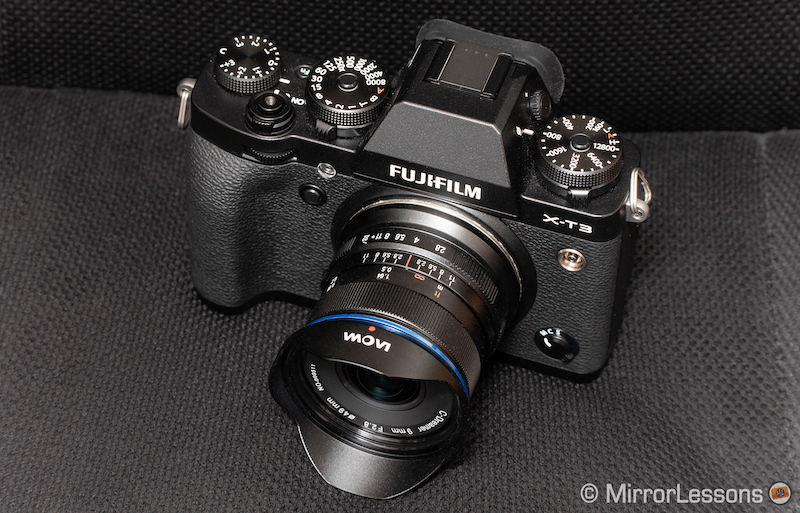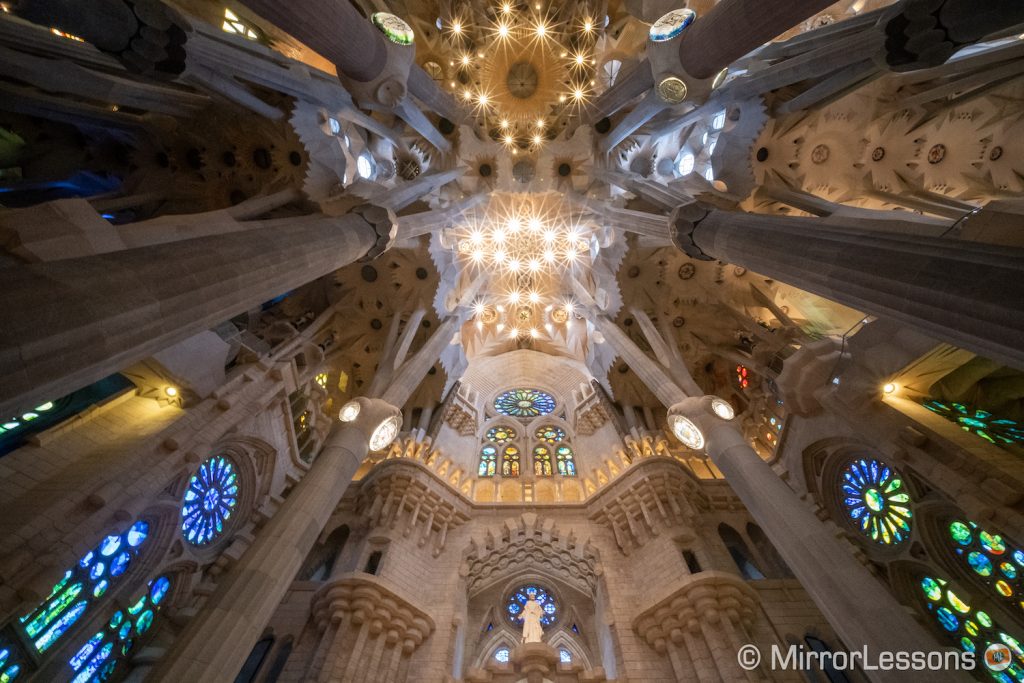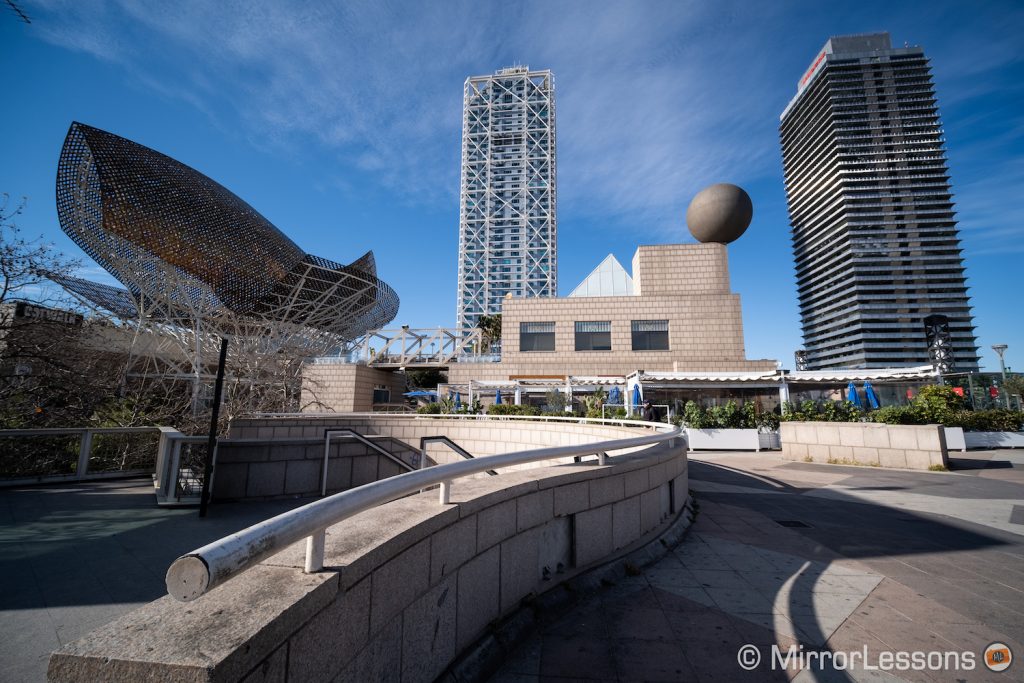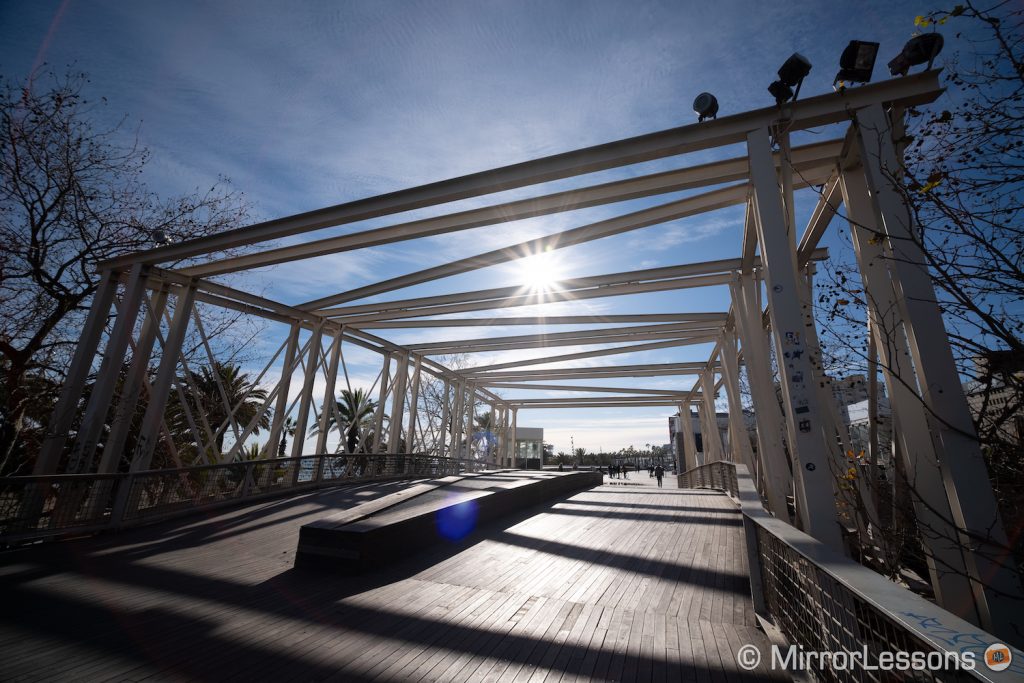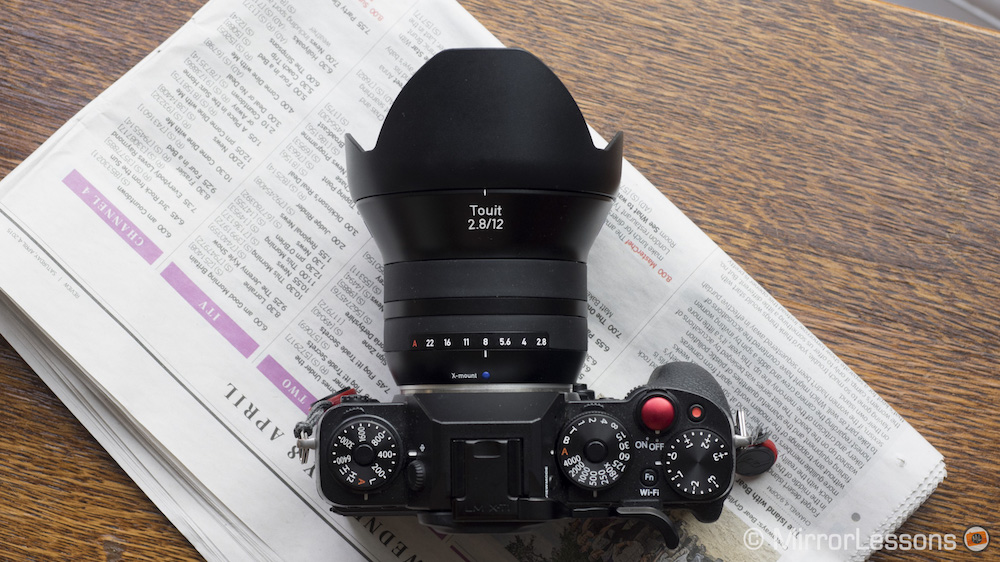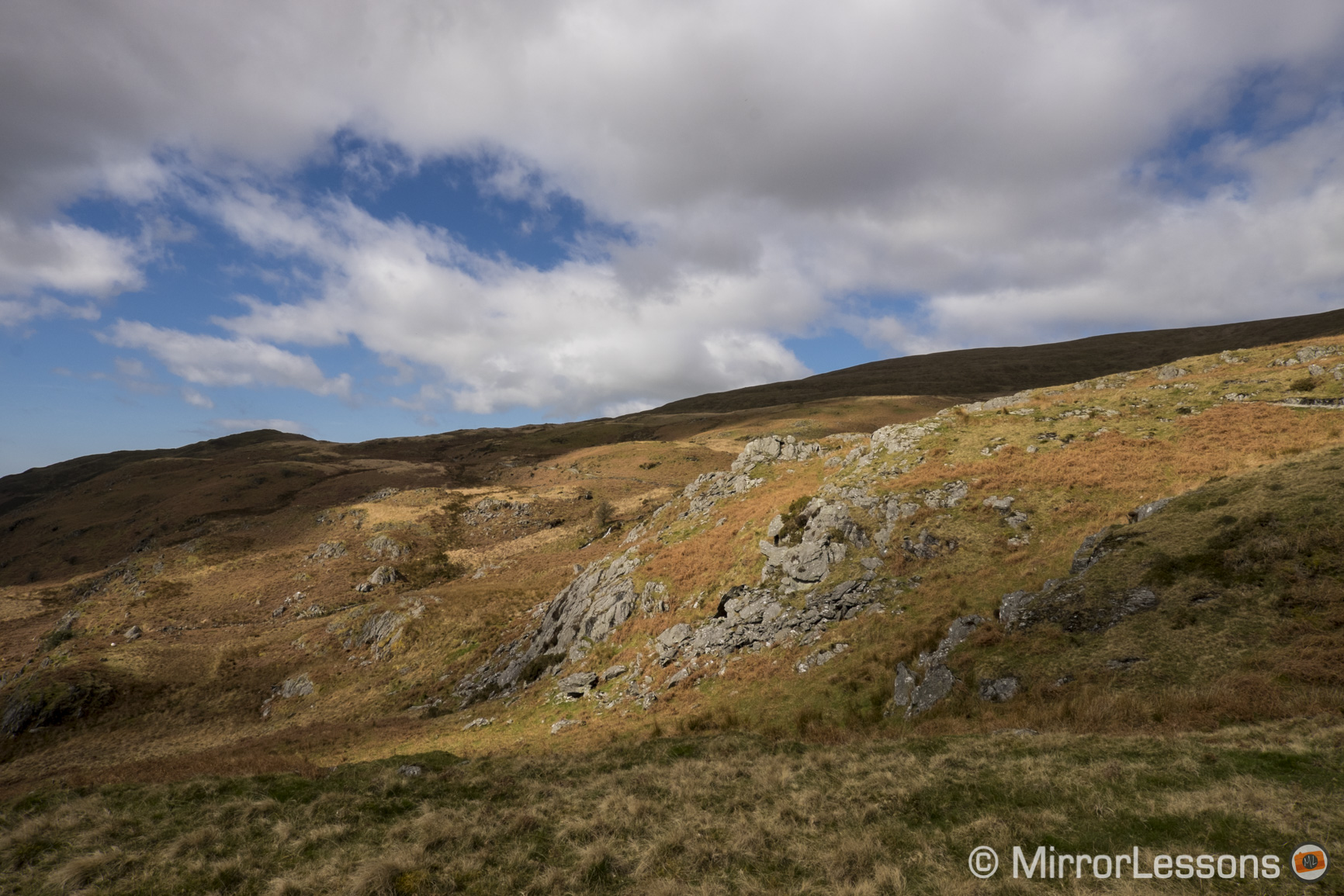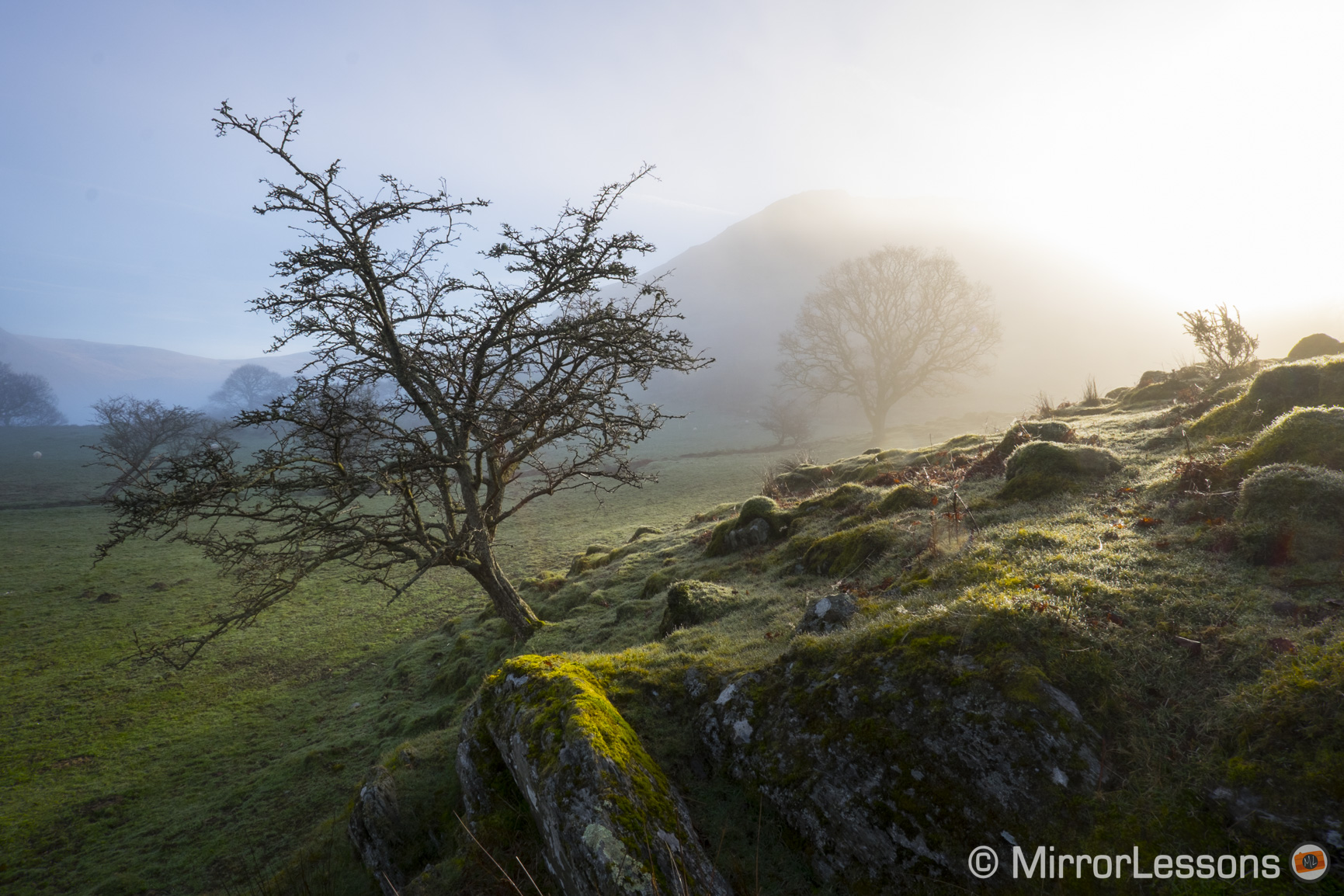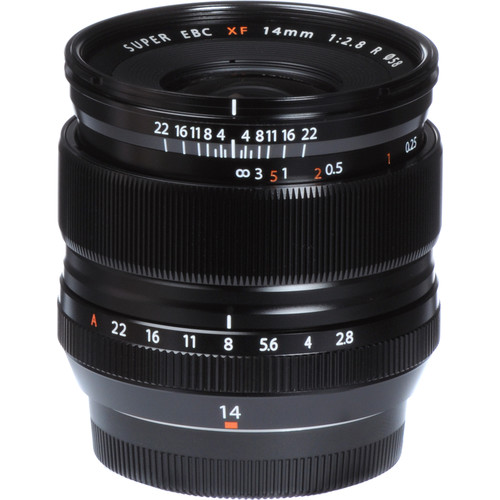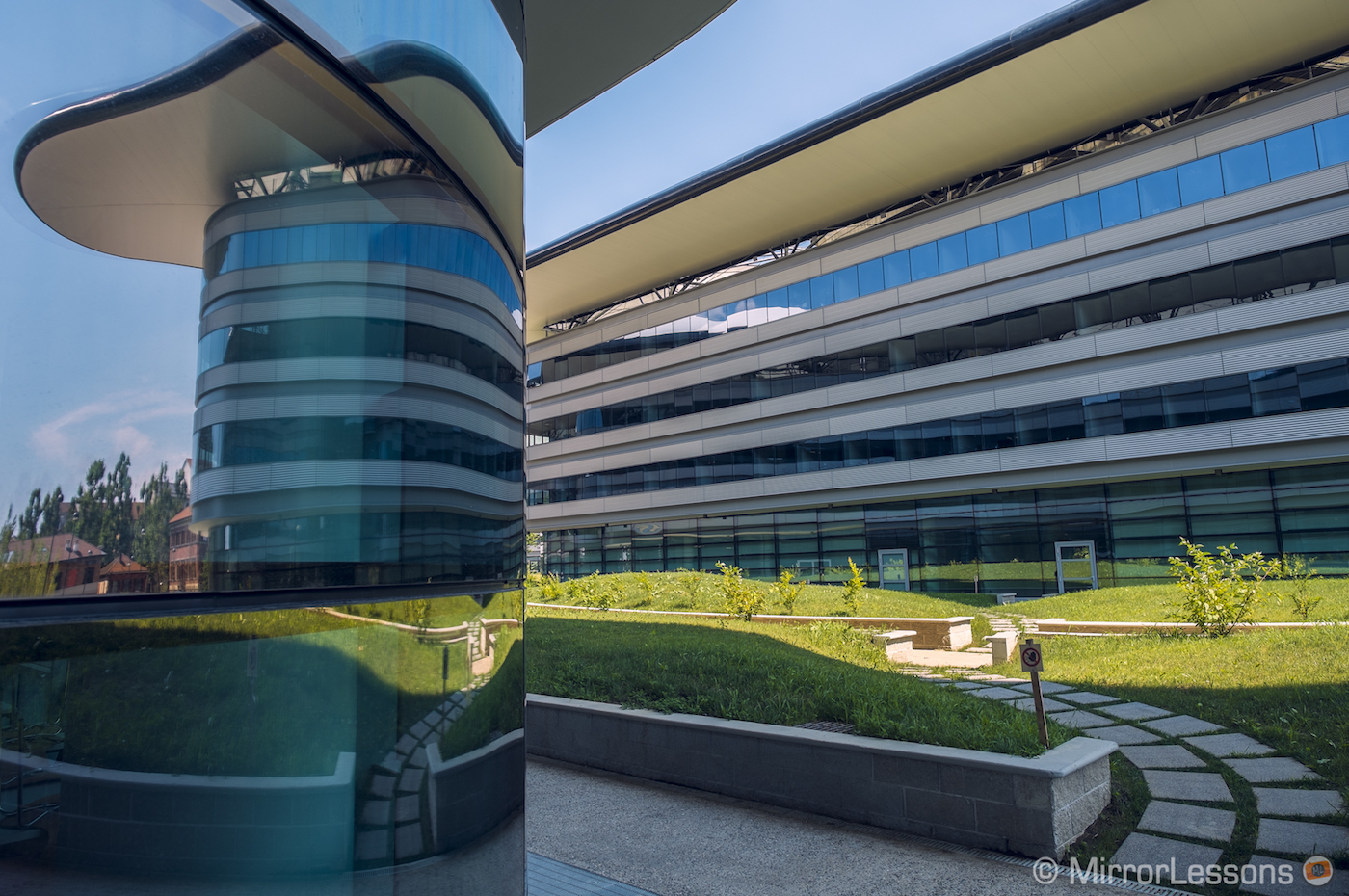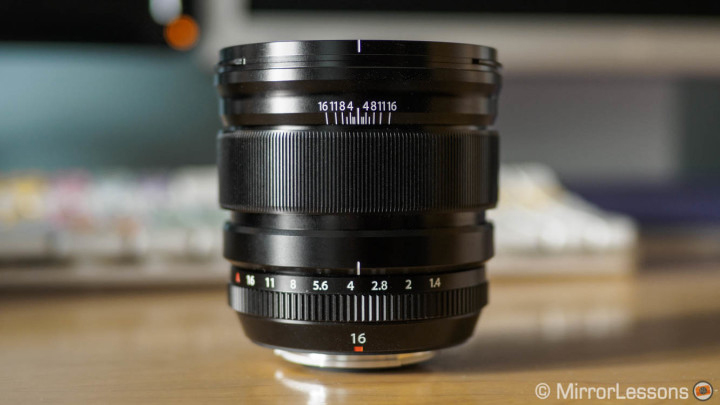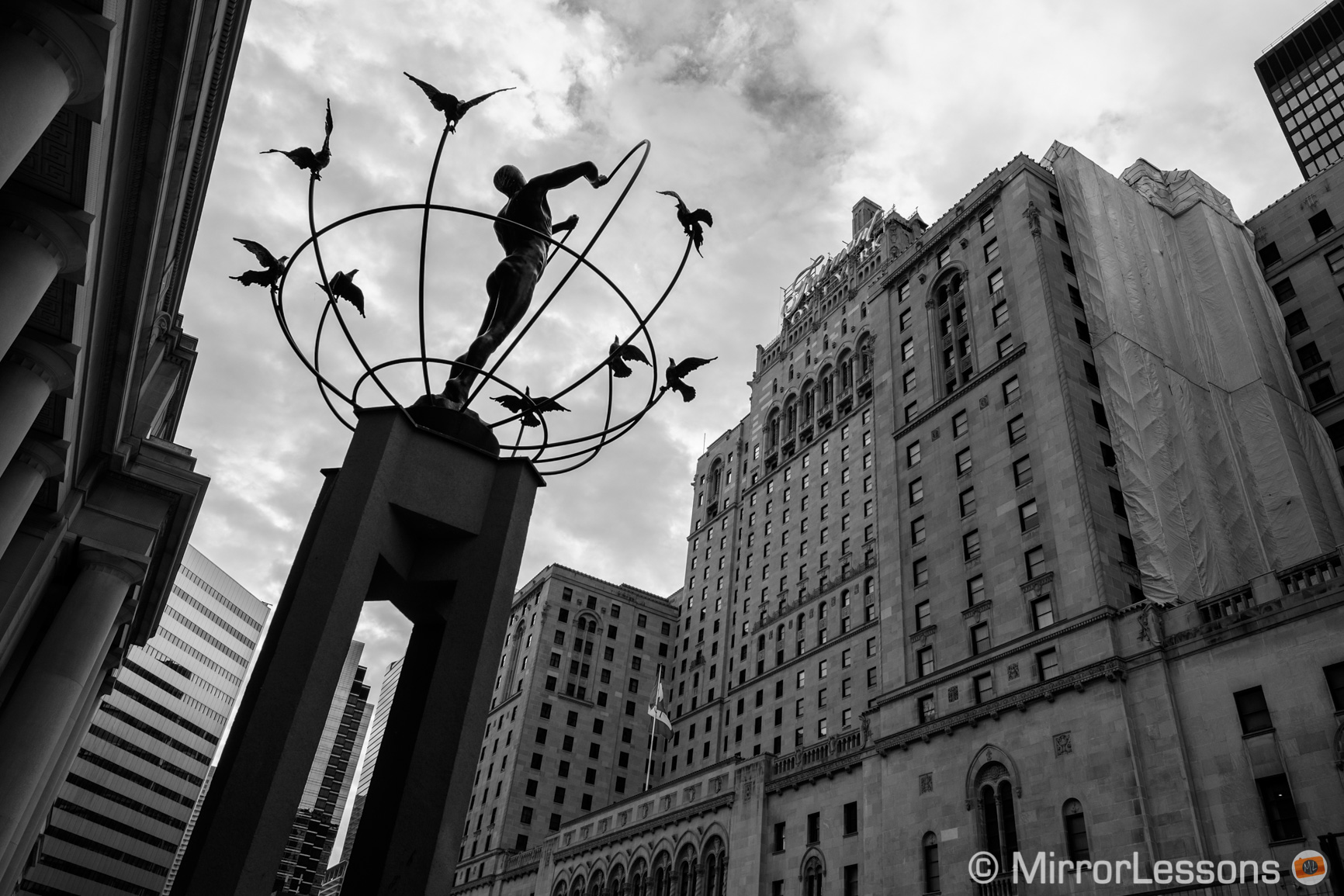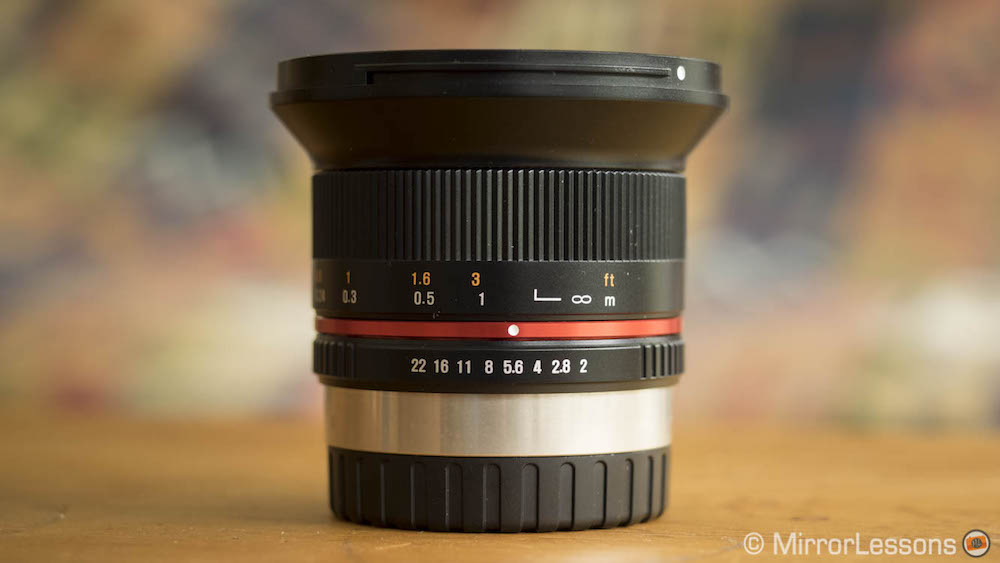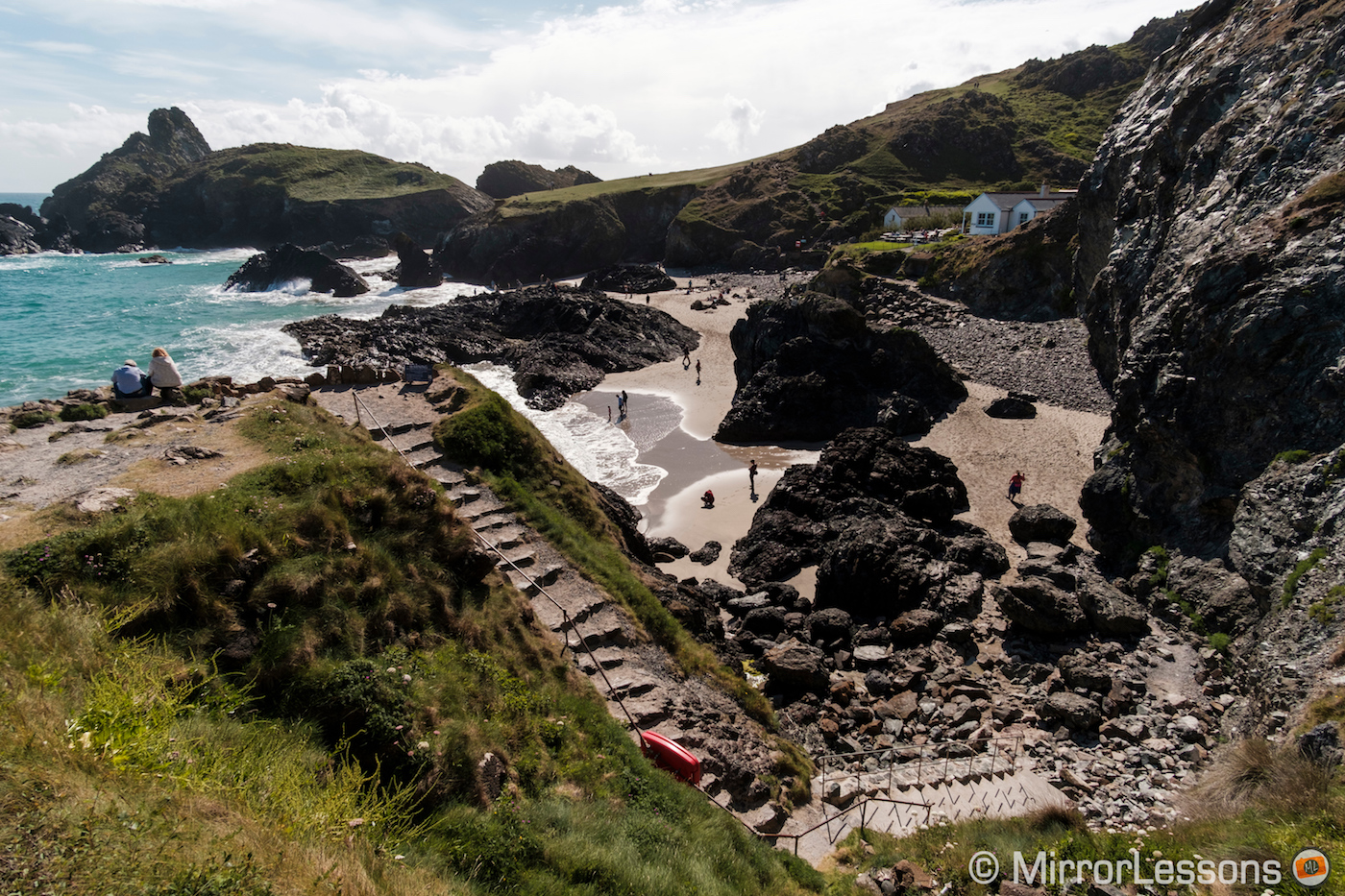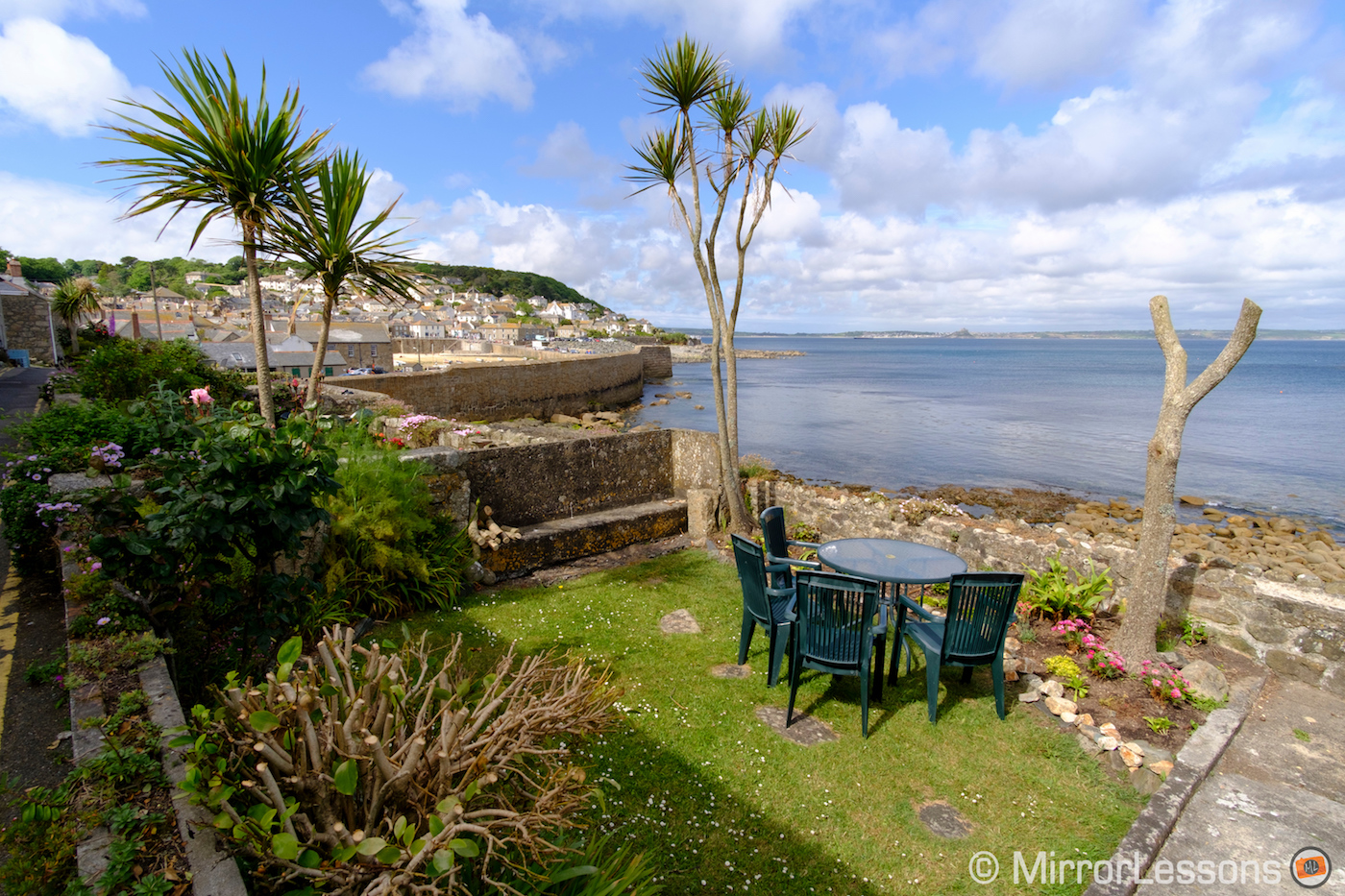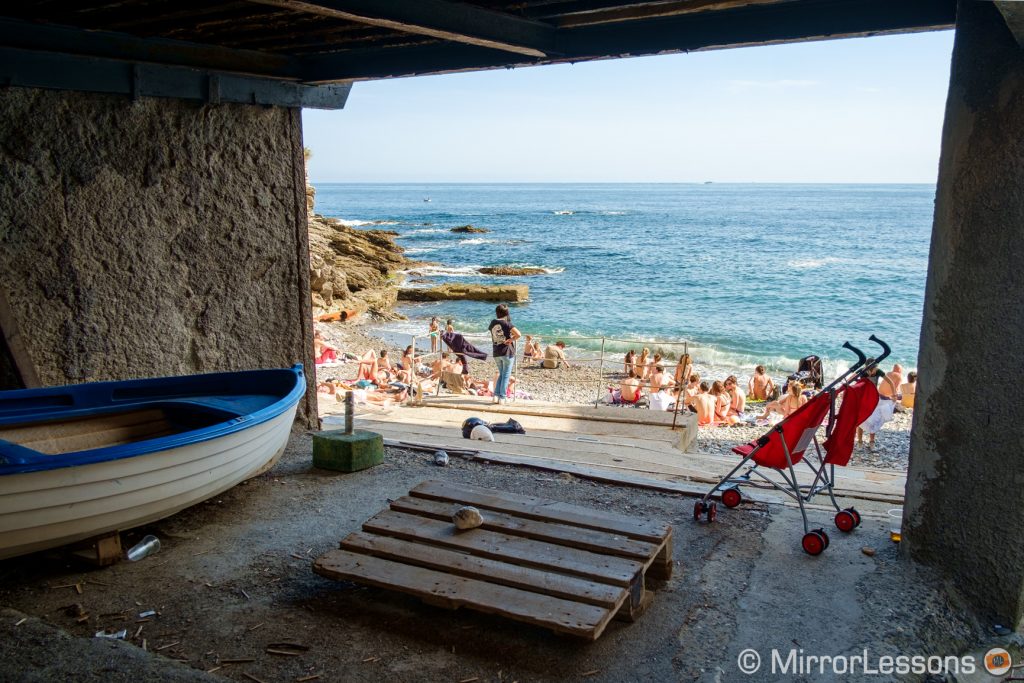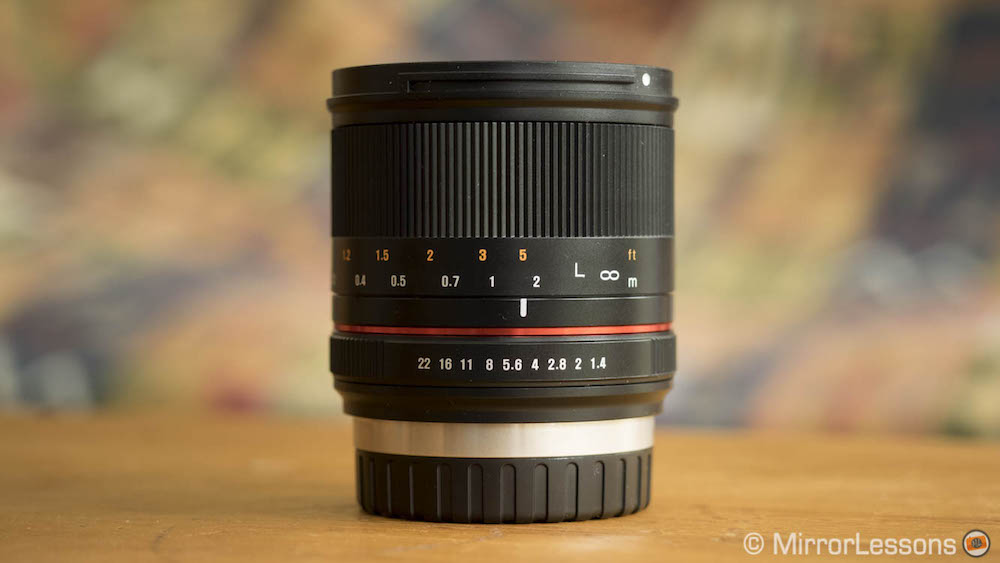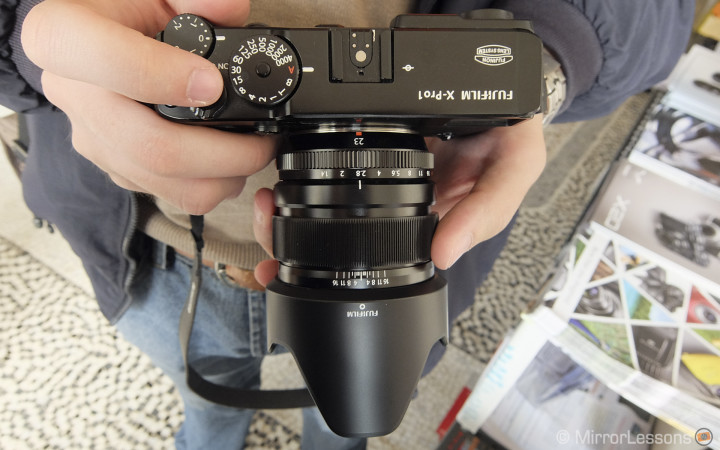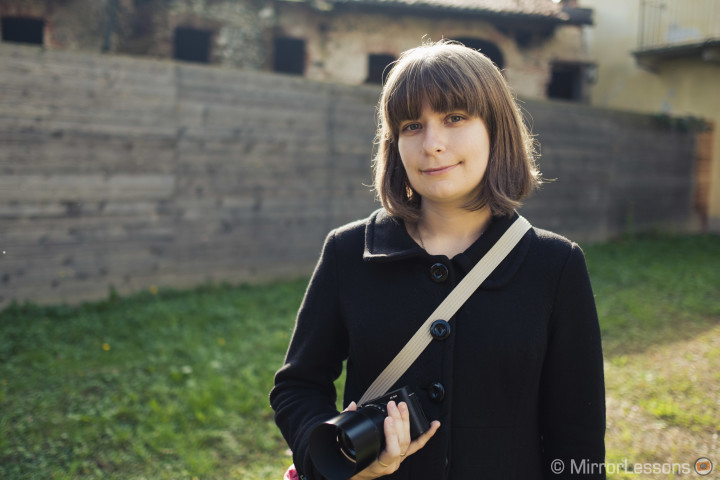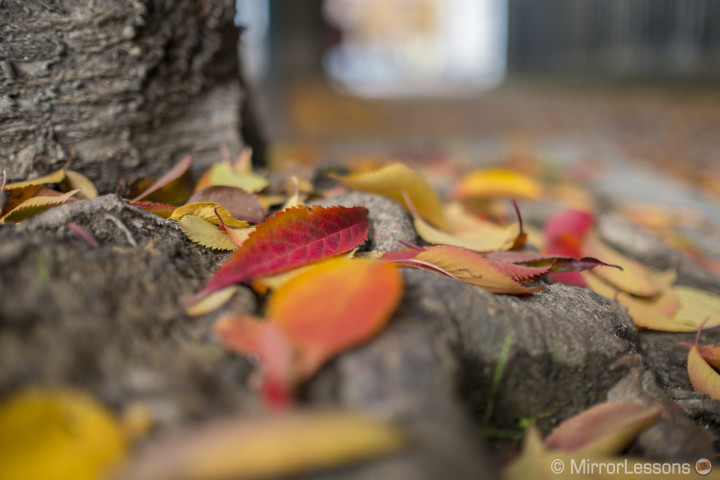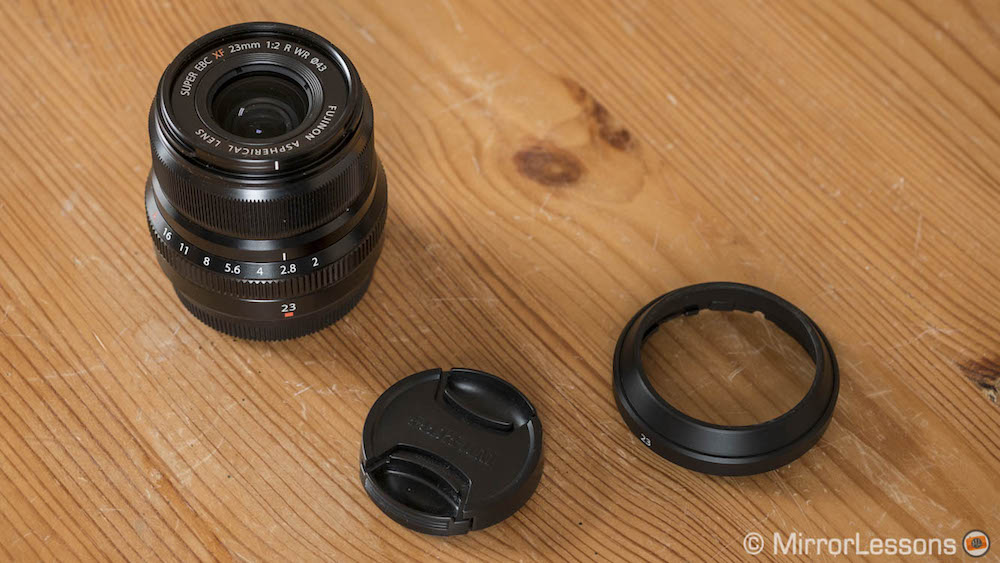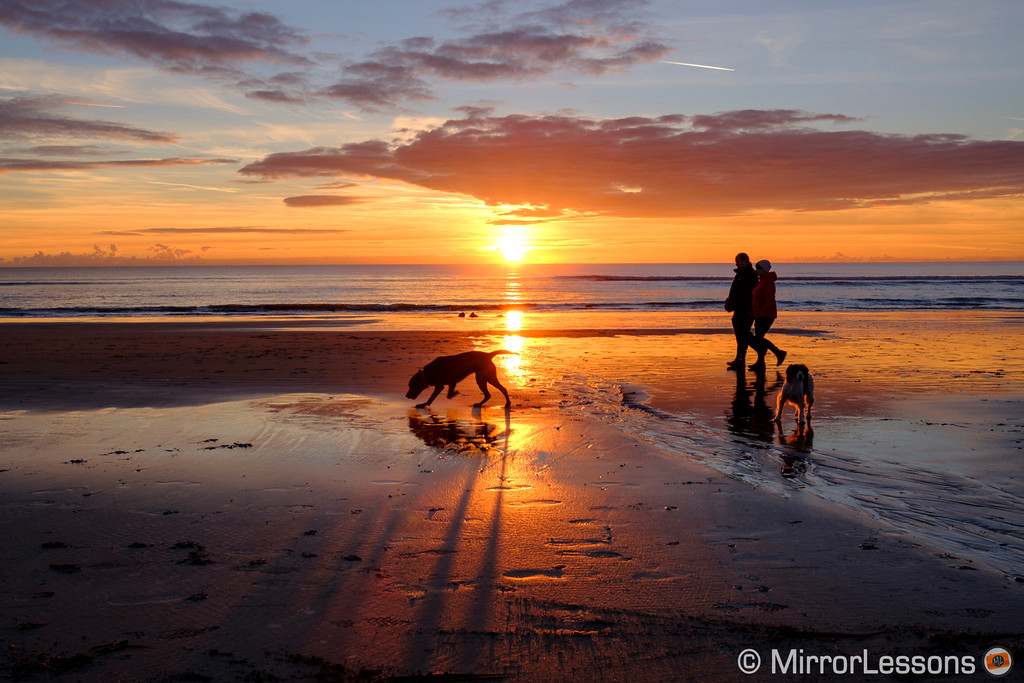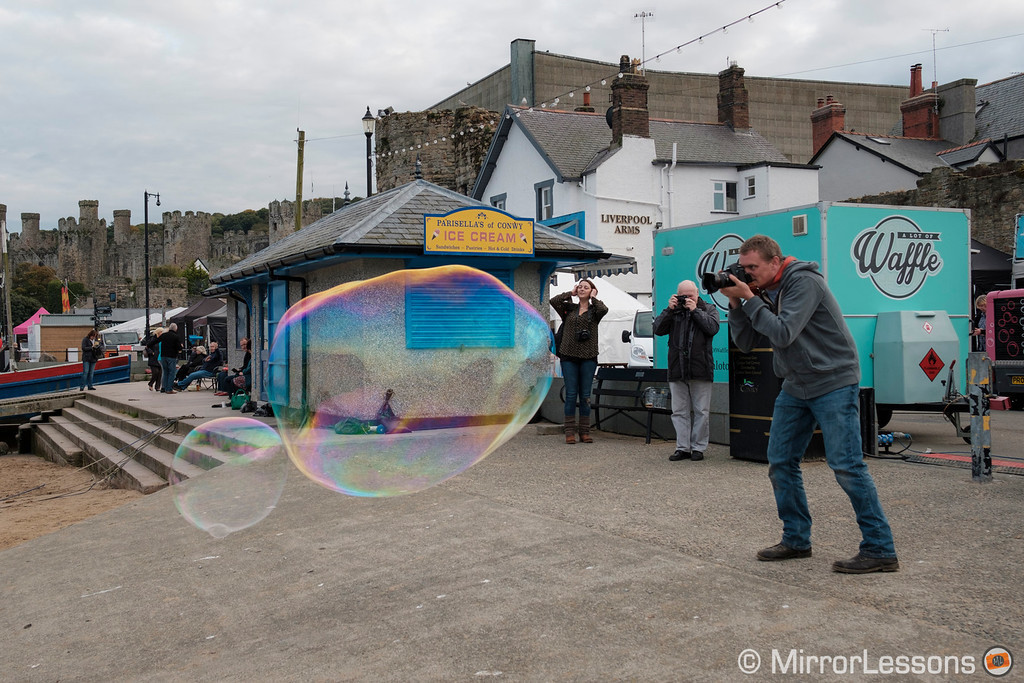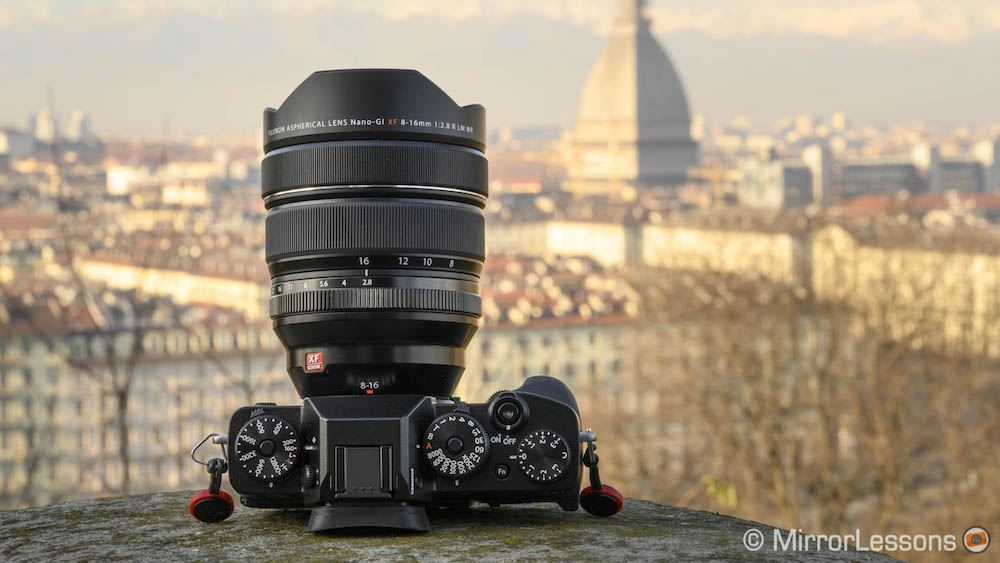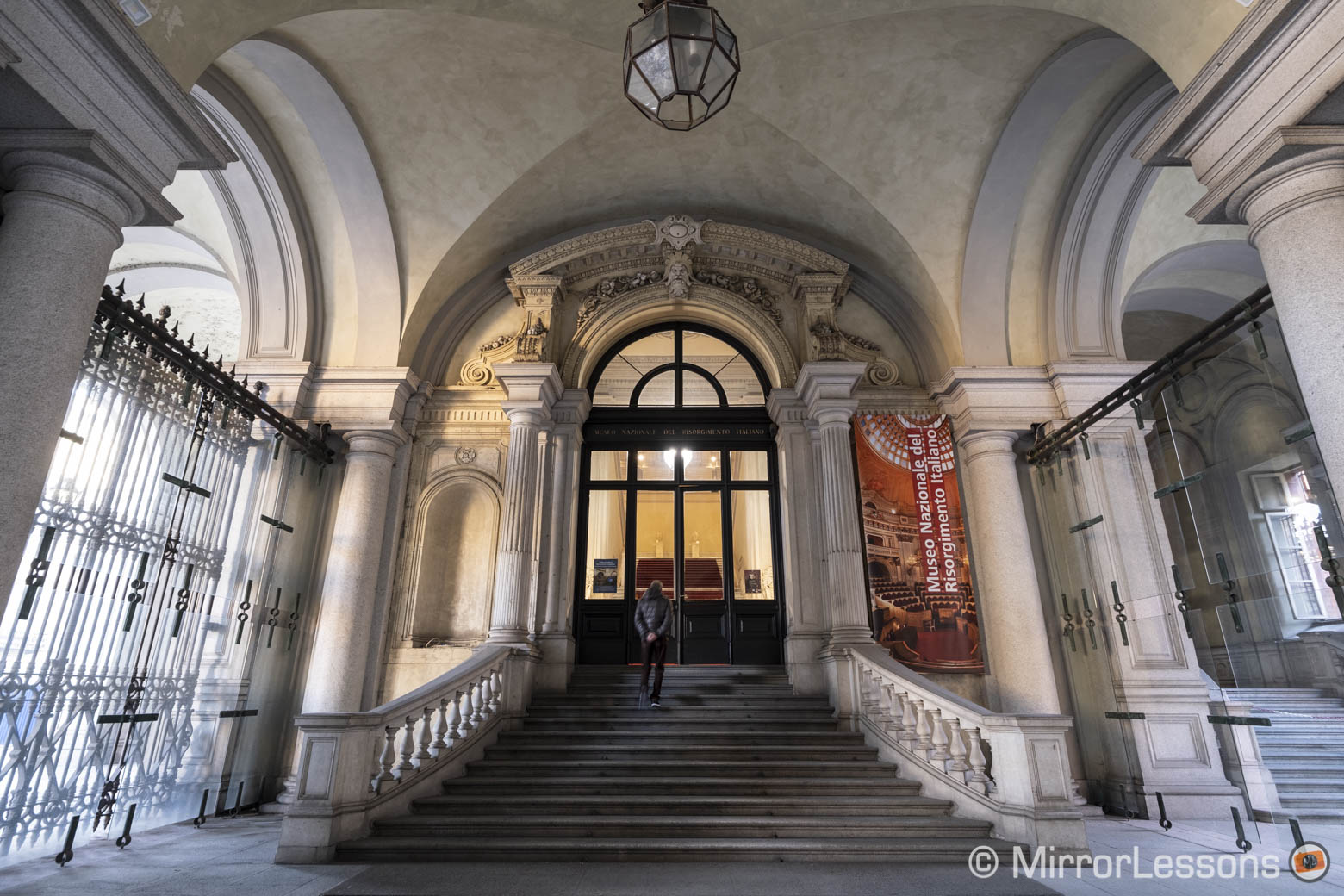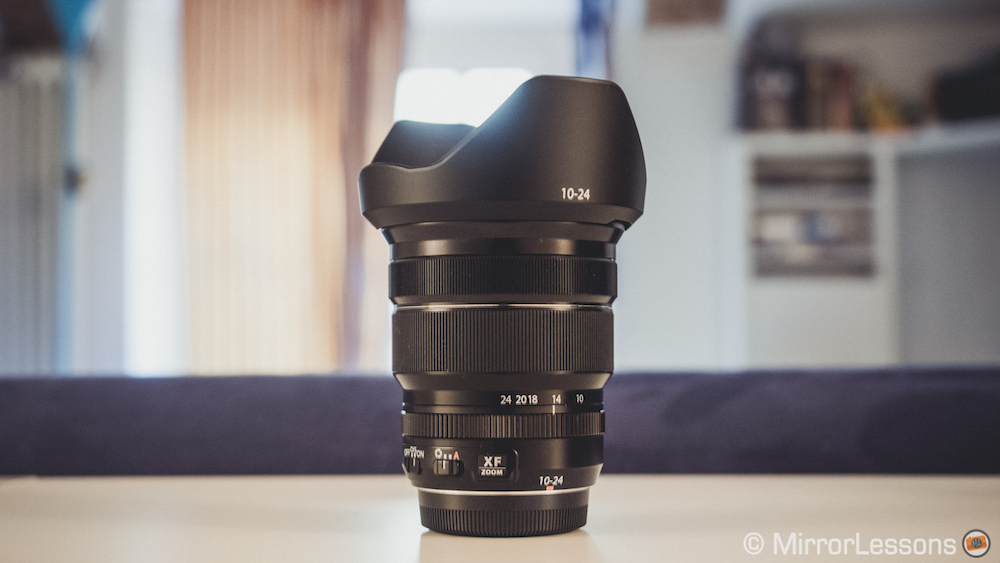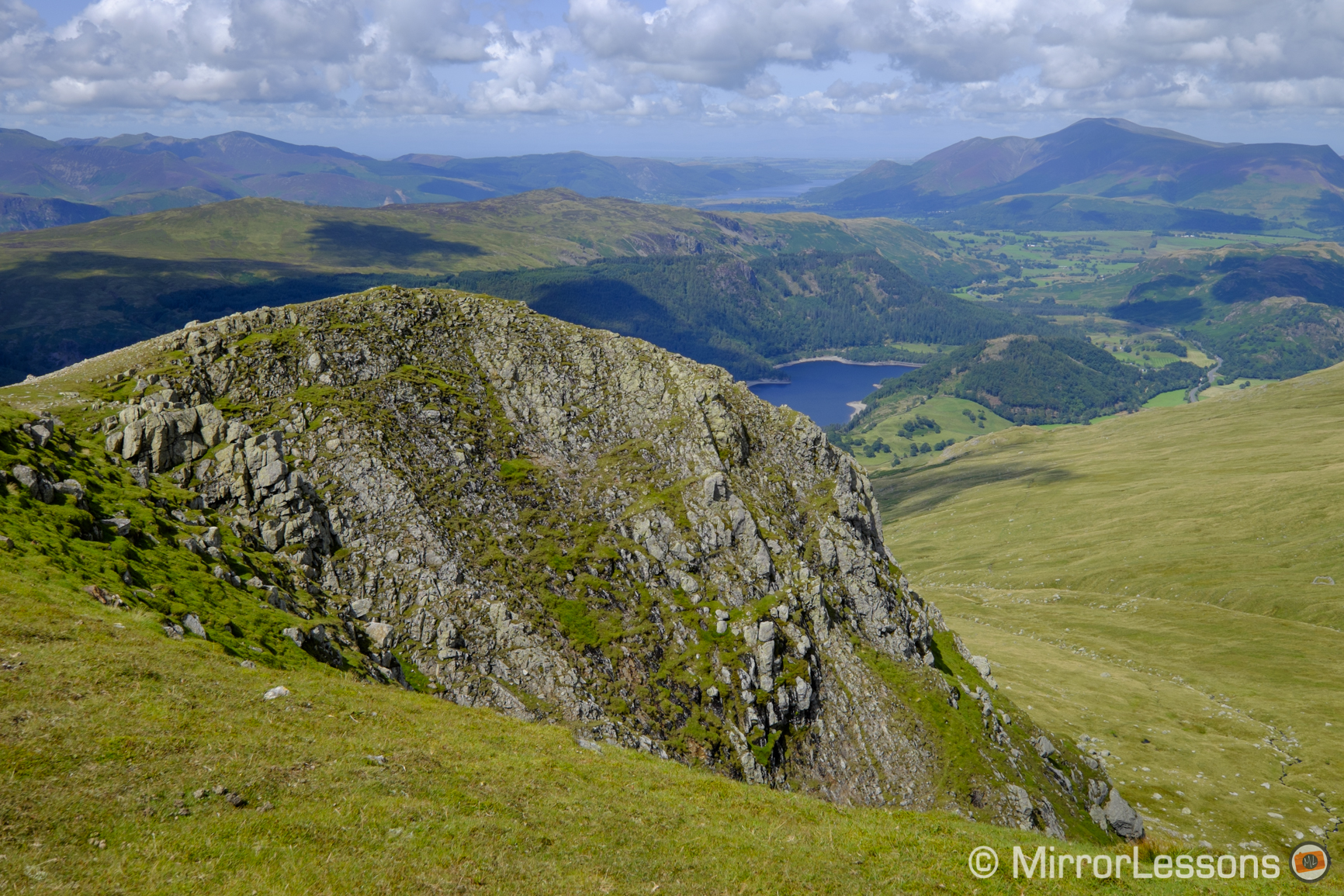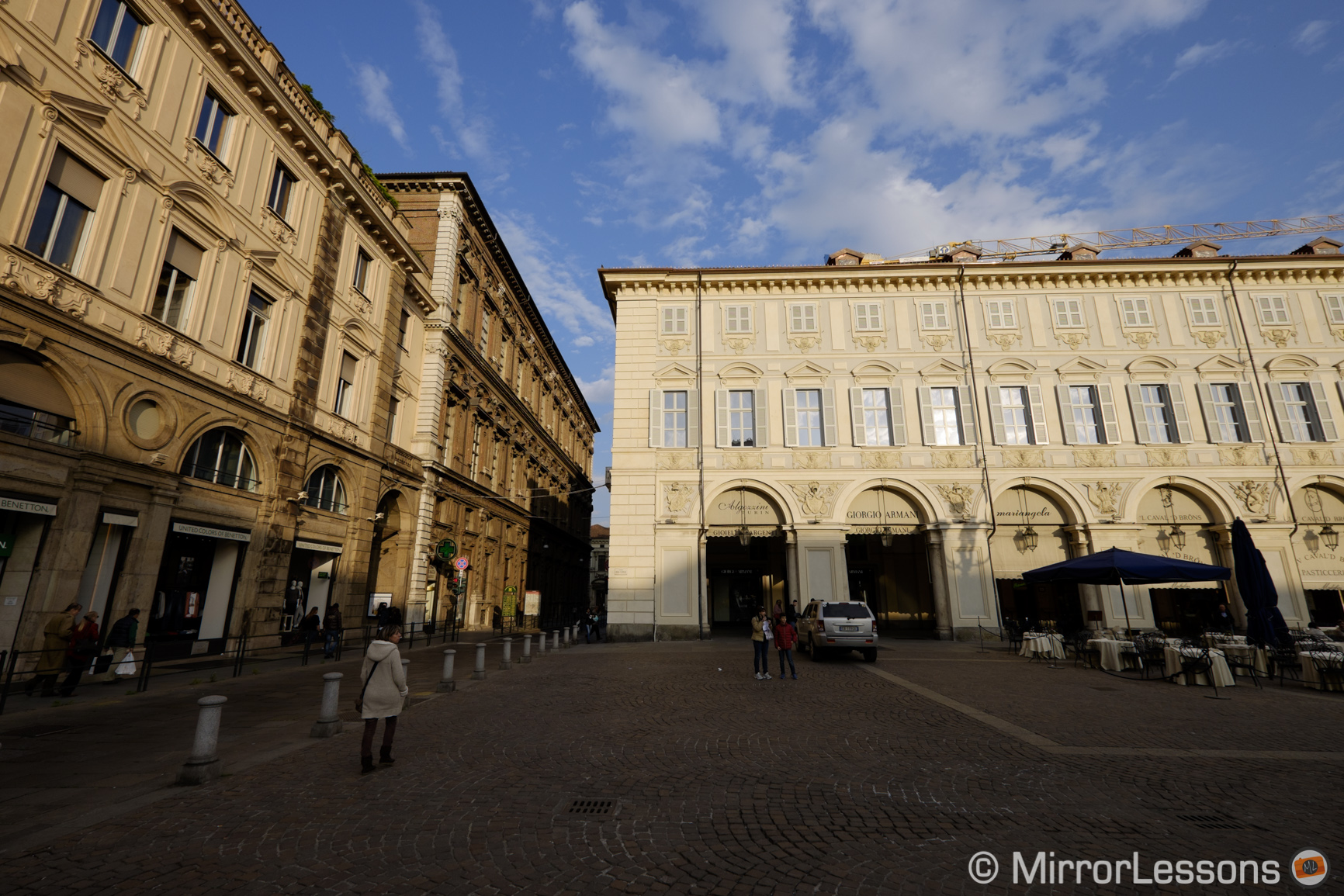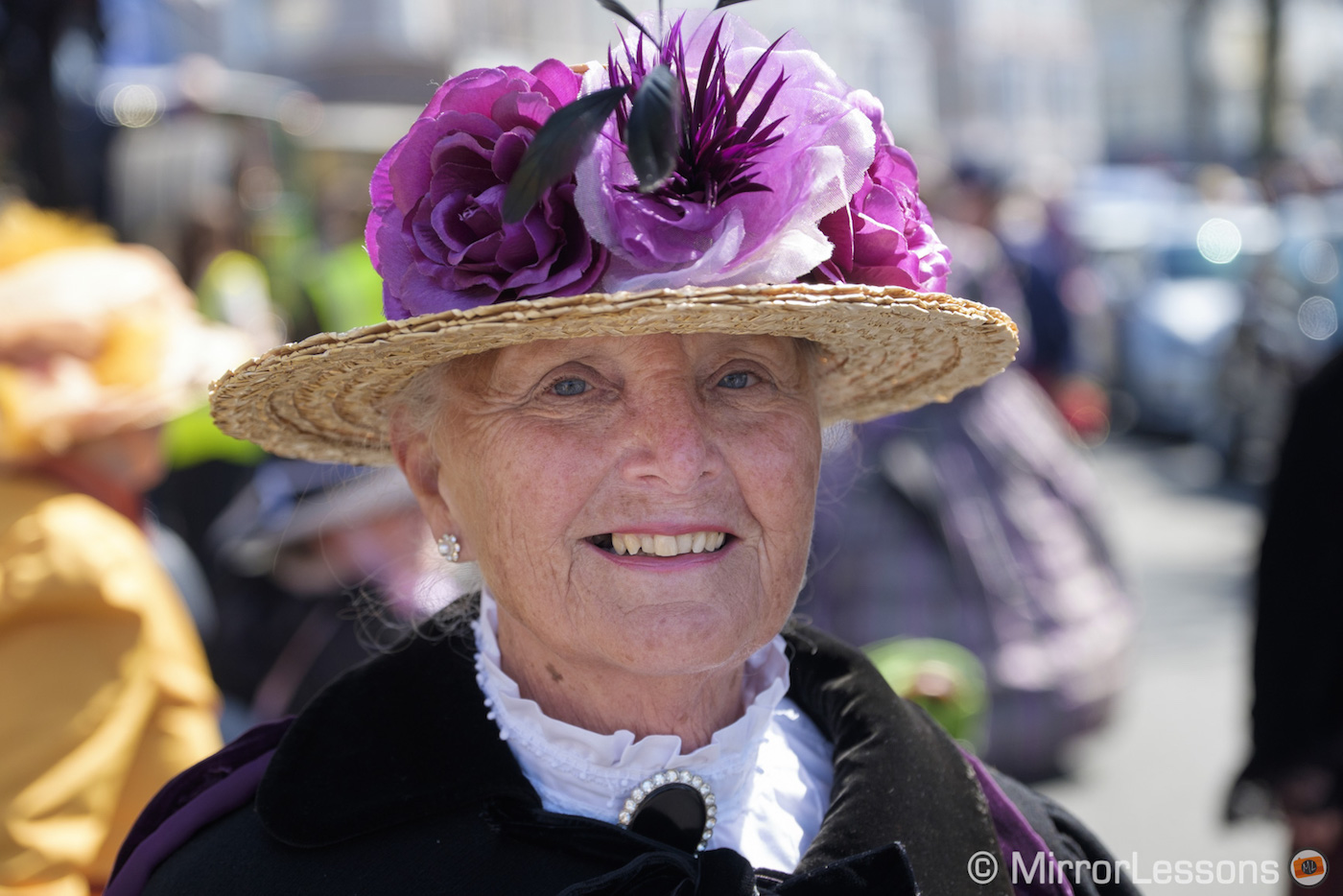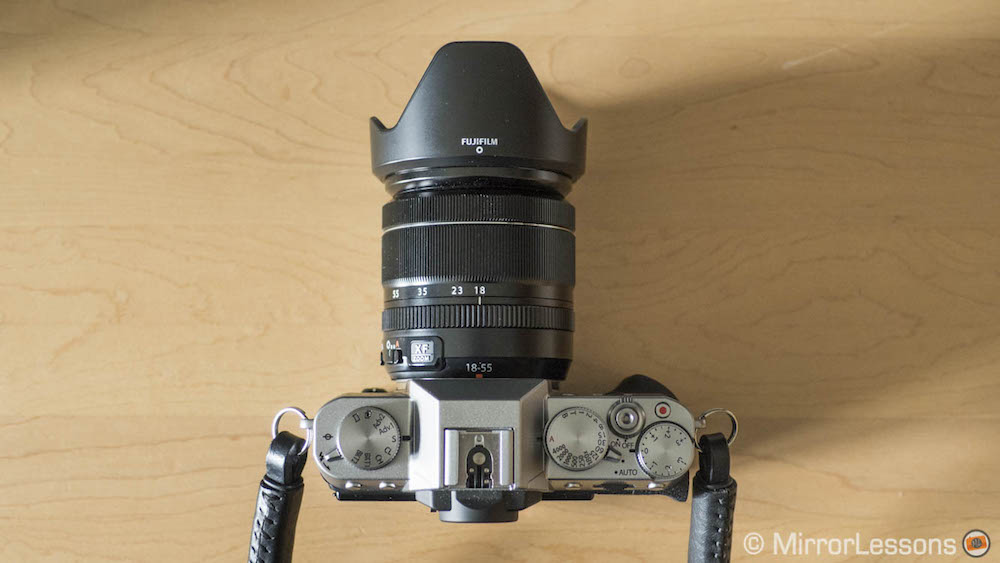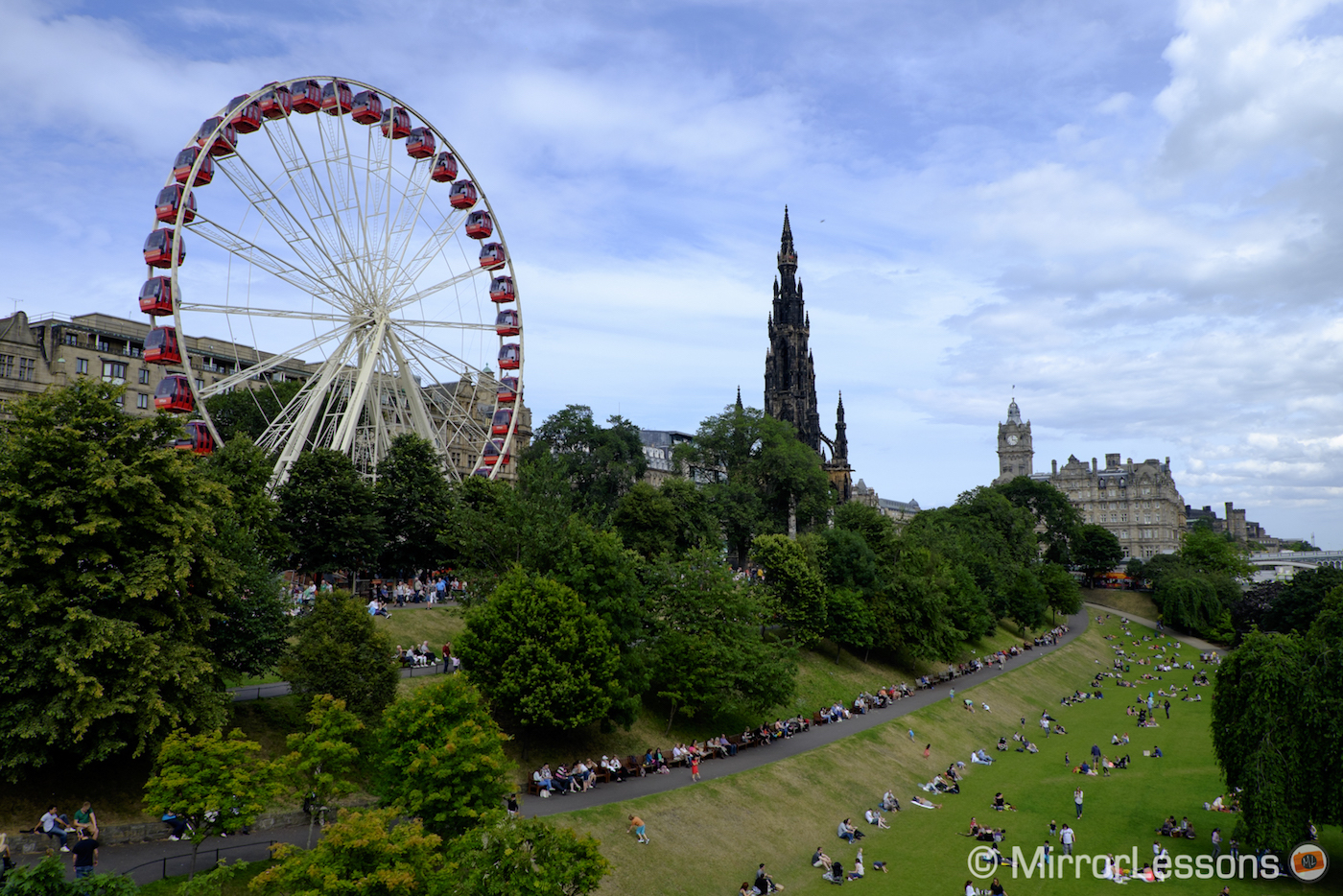If you take a peek inside the bag of most photographers, you will likely find at least one wide-angle lens. Wide-angle lenses allow you to capture much more of the scene even if you stand close to your subject, giving the image more context and a sense of real proximity to the action or location.
Landscapes, astrophotography and architecture are three of the more obvious genres for which wide-angle lenses can be used, but they also come in handy for environmental portraits, macro (if the lens has a close focusing distance) and even close-range sports to name a few.
In Fujifilm APS-C terms, any lens with a focal length of 23mm or wider is classified as a wide-angle lens, whereas anything wider than 16mm falls into the ultra-wide lens category. (In 35mm terms, these focal lengths would be 35mm and 24mm respectively.)
In this article, we’re going to take a look at the best wide-angle options currently available to users of popular models such as the Fujifilm X-T3, X-T2, X-H1, and X-Pro2. We consider this list dynamic in that we plan to update it whenever Fujifilm or a third-party company releases a relevant wide-angle product and we are able to test it.
Ethics statement: All opinions expressed in this article are based on our real-world experience with each lens unless otherwise stated. We were not asked to write anything about these products, nor were we provided any compensation of any kind. Within the article, there are affiliate links. If you decide to buy something after clicking the link, we will receive a small commission. To know more about our ethics, you can visit our full disclosure page. Thank you!
[toc heading_levels=”2″]
Super-Wide Prime Lenses for Fujifilm
Super-wide angle primes are classified as lenses with a focal length of less than 24mm in 35mm equivalent terms. In the case of the Fujifilm X series, this would be the equivalent of less than 16mm. Generally photographers purchase a lens with a very wide field of view in order to capture landscapes, cityscapes, and architecture.
The widest: Laowa 9mm f/2.8 Zero D
The widest prime lens available for the Fujifilm X series is the Laowa 9mm f/2.8 Zero D, providing coverage up to a 113° angle of view. It is extremely compact and lightweight for a wide-angle prime, and as the name suggests, promises close-to-zero distortion. Although it lacks weather-sealing, it benefits from a solid metal build that fits all Fujifilm cameras nicely, a clicking aperture ring and a smooth focus ring.
Unlike most of the other lenses mentioned here, the 9mm is a manual focus lens without electronic contacts, so it won’t record the aperture in the EXIF data. For this reason, you also need to make sure that “Shoot without lens” is set to On in the menu – otherwise the camera won’t take a picture while the lens is mounted.
We used it for a brief period in Barcelona and were very impressed with all aspects of the lens, including image quality and handling. We found that sharpness was excellent across the frame, even at f/2.8, and distortion is all but absent as long as you make sure the camera is level with the ground. Chromatic aberrations weren’t an issue and flare only appears if you shoot into direct sources of light. We particularly enjoyed the sunstars the lens produces when used at the slower apertures. You can see an example in the image taken inside the Sagrada Familia below!
Why choose the Laowa 9mm f/2.8 Zero-D for your X Series camera:
- optical quality is excellent
- very little distortion as promised
- the 2.8 aperture is handy for low-light work
- compact and affordable for a wide-angle lens
To consider:
- no weather-sealing
- if you don’t enjoy manual focus lenses, the 9mm may not be for you
Check the price on B&H Photo
The outsider: Zeiss Touit 12mm f/2.8 (equivalent 18mm)
The Zeiss Touit 12mm and 32mm never received much love from the Fujifilm community, in part because of their hefty price tag but also because the Touit 32mm in particular didn’t fill an urgent gap in the X line-up. (Fujifilm users already had the excellent XF 35mm f/1.4 at the time.) The 12mm was a more relevant addition to the range because its field of view is noticeably wider than that of its closest rival, the XF 14mm f/2.8.
Having spent three weeks with the 12mm, I can say that there is a lot to like about this lens despite these criticisms. Sharpness is excellent at all values (especially f/4 and f/5.6), the bokeh is decent at f/2.8 if you use the closest focus distance of 16.5cm, and you won’t experience any issues with distortion, vignetting, chromatic aberration or flare. It isn’t particularly compact, especially when used with the petal-shaped lens hood, but it is fairly lightweight and suits larger cameras like the X-T3 very well. The barrel is made of metal but the aperture and focus rings are rubberised, making them comfortable to use in cold temperatures.
The AF motor is fast but not as fast as today’s XF lenses. Still, it’s more than enough for landscapes, architecture and the multiple other genres this lens is intended for.
I only have a couple of gripes, the first of which is that the rings aren’t all that easy to find with your fingers since they are flush with the barrel and lack texture. The aperture ring also tends to be noisy and moves about too freely. Then there is the retail price, which hasn’t come down all that much since its release. That said, it is possible to find the occasional second-hand deal or promotion.
Why choose the Zeiss Touit 12mm f/2.8 for your X Series camera:
- optical quality is exactly what you’d expect from a Zeiss product
- the 2.8 aperture is handy for low-light work
To consider:
- aperture ring is noisy and moves about too freely
- one of the more expensive lenses on this list
Reminder: the links below are affiliate links. If you decided to buy something after clicking the link, we will receive a small commission.
Check the price on B&H Photo
The oldie but goodie: Fujinon XF 14mm f/2.8 R (equivalent 21mm)
Announced not long after the X-Pro1 back in 2013, the 14mm was the fifth lens to appear on the X Series roadmap. Both small and compact, it is a great match size-wise for all Fujifilm cameras and benefits from a metal construction with a clicking aperture ring and a sliding focus ring that lets you quickly jump between auto and manual focus. It also includes engraved depth of field markings on the barrel. Unfortunately the aperture ring can be quite loose on some samples, which is something that can be said about most early XF lenses.
Despite its age, edge-to-edge sharpness is excellent at all aperture values, distortion is minimal and the bokeh is fairly pleasant if you use the fastest aperture of 2.8 and focus as close as possible. (The minimum focus distance is 18cm.)
The lens comes packaged with the same plastic petal-shaped lens hood as the 18-55mm. While a plastic hood is better than no hood at all, we would have expected the lens to come with its own metal lens hood instead.
Because it is an older lens, its stepping focus motor is slower and noisier than that of modern XF lenses. That said, you should find it a little faster on the X-T3 compared to previous cameras because of the camera’s updated autofocus algorithm.
Why choose the XF 14mm f/2.8 for your X Series camera:
- sharpness is still up to scratch despite its age
- fairly fast maximum 2.8 aperture
- very little distortion for a wide-angle lens
To consider:
- AF motor is slower than that of more recent lenses
- build quality isn’t quite as good as more recent lenses
Reminder: the links below are affiliate links. If you decided to buy something after clicking the link, we will receive a small commission.
Check the price on B&H Photo
Wide Prime Lenses for Fujifilm
Broadly speaking, wide angle primes are equal to or wider than 35mm in 35mm equivalent terms, or 23mm for the Fujifilm X series. They can come in handy for many genres including landscapes street, journalism and environmental portraits. In this category there are three main fields of view that are popular amongst photographers: 24mm, 28mm and 35mm equivalent. We’ve listed the best from widest to narrowest.
The fastest, part I: Fujinon XF 16mm f/1.4 R WR (equivalent 24mm)
The XF 16mm f/1.4 may not be as wide as some of the other super-wide lenses mentioned here but it certainly offers the best overall value and loads of versatility for genres as varied as landscapes, environmental portraiture and street.
The build quality of the barrel is excellent and unlike the other options mentioned below, features full weather-sealing. It is complete with a clicking aperture ring, which isn’t as loose as those of the older primes, and a sliding MF/AF focus ring. There is also distance scale but we find that the lines are bunched too closely together for it to be useful. Although the lens is bigger than most other XF wide-angle primes, it is still a good fit for cameras like the X-T3.
The most appealing aspect of this lens is of course its fast 1.4 aperture, which when combined with its excellent minimum focus distance of 15cm, allows for lots of background separation and a pleasant bokeh. (If you don’t focus close enough however, you may find the bokeh a little nervous against certain backgrounds.)
Sharpness is already excellent at 1.4 and continues to improve until f/5.6 which seems to be the sweet spot. At close focus distances, sharpness wide open isn’t quite as good as at a distance. Flare, chromatic aberration, vignetting and distortion are all well-controlled, and the AF motor is fast and silent. It comes with its own plastic petal-shaped lens hood but if you are vehemently against plastic, you can purchase the metal LH-X16 accessory hood separately.
Why choose the XF 16mm f/1.4 for your X Series camera:
- incredibly versatile for landscapes, architecture, street, environmental portraits, astrophotography and more
- sharpness is excellent through the aperture range
- the fast 1.4 aperture is useful for subject separation and low-light work
To consider:
- a bit too large for the smallest X Series bodies
- one of the more expensive lenses on this list
Reminder: the links below are affiliate links. If you decided to buy something after clicking the link, we will receive a small commission.
Check the price on B&H Photo
The best bargain: Samyang Rokinon 12mm f/2
I cannot count how many times I’ve read reviews praising the qualities of the Samyang Rokinon 12mm f/2, and after trying it for ourselves last year, we finally understood what all the hype was about.
Both small and light, you can comfortably use the 12mm on any X Series camera. The aperture ring is very precise and the focus ring is sufficiently stiff that it won’t accidentally move when shooting landscapes or astrophotography. The lens could do with a hyperfocal scale however. On the negative side, it lacks weather-sealing and is mostly made of plastic. Because it is manual focus and lacks electronic contacts, it doesn’t communicate any EXIF data to the camera either.
As for the optical quality, there is very little to complain about considering how affordable this lens is compared to the competition. Sharpness is already excellent from f/2, with peak performance being found between f/4 and f/5.6, and the bokeh is pleasant enough at the fastest aperture if you take advantage of the minimum focus distance of 20cm. Vignetting, chromatic aberration and barrel distortion are all present to varying degrees but they can be corrected by applying the lens profile in post. (Note that you cannot correct the JPGs in-camera because the lens doesn’t communicate with the camera.)
Sadly we weren’t able to test the lens for astrophotography but by all accounts, it is one of the best lenses you can find for the genre thanks to its wide angle, fast aperture and well-controlled coma.
Why choose the Samyang Rokinon 12mm f/2 for your X Series camera:
- the perfect combination of affordability and quality
- excellent performance from the fastest aperture
To consider:
- manual focus only
- you cannot apply corrections to JPGs taken in-camera because the camera and lens don’t communicate EXIF data
Reminder: the links below are affiliate links. If you decided to buy something after clicking the link, we will receive a small commission.
Check the price on B&H Photo
Super compact: Fujinon XF 18mm f/2 R (equivalent 27mm)
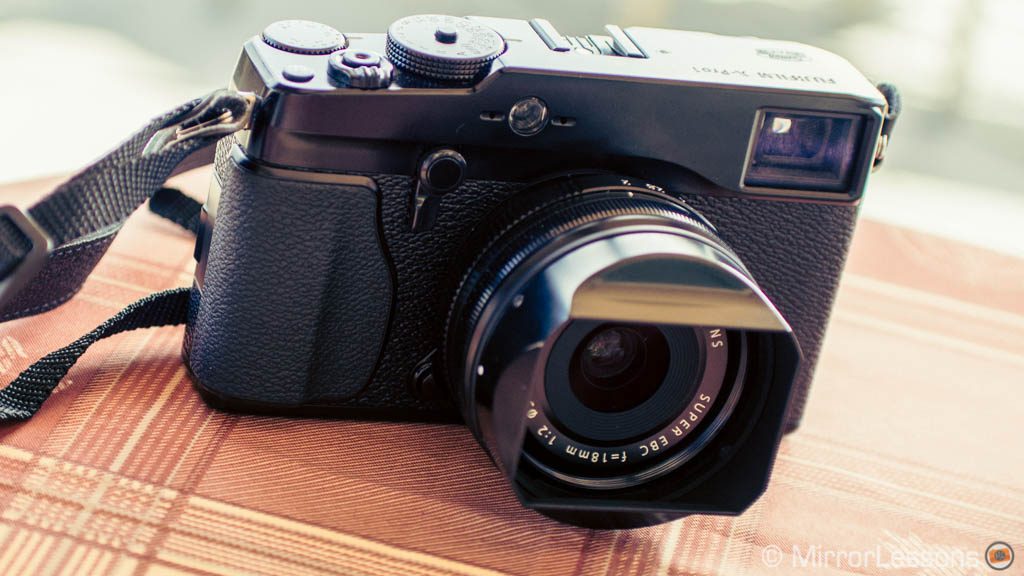
The 18mm, with its 27mm equivalent field of view, is a decent wide angle lens but optically speaking, it is known as one of the worst performers in the Fujinon lens range. It isn’t as sharp as most other XF lenses, suffers from chromatic aberration and barrel distortion, and has a sluggish AF motor. The metal barrel is complete with well-damped focus and aperture rings, but it lacks weather-sealing.
All this being said, we felt we should include it on the main list because it is extremely lightweight and compact, with dimensions just shy of a pancake lens. This makes it a good option for street and travel, and physically a good fit for the smaller X Series cameras in the range. It is also the only prime close to the popular 28mm equivalent for the system.
Why choose the XF 18mm f/2 for your X Series camera:
- one of the most compact and lightweight wide angle primes for the system
- the only prime close to the 28mm equivalent field of view
To consider:
- optical quality not up to the standard of today’s XF lenses
- AF motor is sluggish (but this matters less for landscapes and architecture)
Reminder: the links below are affiliate links. If you decided to buy something after clicking the link, we will receive a small commission.
Check the price on B&H Photo
Affordable option: Samyang Rokinon 21mm (equivalent 31.5mm)
The Samyang Rokinon 21mm f/1.4 is a wide-angle manual focus prime for mirrorless systems with an unusual 31.5mm equivalent field of view. We had the chance to use the X mount version while travelling around Cornwall a couple of years ago.
Although it is light and compact, the focus ring is rather loose and it’s a shame that there aren’t any electronic contacts on the mount to communicate EXIF data. We were also surprised by the lack of a hyperfocal scale on the barrel given that this is a fully manual lens. It doesn’t feature any weather sealing but the build quality is decent.
At the centre, the lens peaks at f/5.6 and the performance is good at short focus distances where you also get a decent (though far from spectacular) out-of-focus rendering. f/1.4 is a little soft but it improves from f/2. As for the corners, they are always softer than the centre, even at the higher aperture values, so it isn’t as good an option for landscapes as the XF 23mm f/2 for example. Resistance to flare and chromatic aberration is excellent however, and barrel distortion isn’t an issue.
The main reason to consider this lens is for the price since it is less expensive than most X series lenses, even the 23mm f/2.
Why choose the Samyang Rokinon 21mm f/1.4 for your X Series camera:
- fast f/1.4 aperture is great for low-light work and separating subject from background
- cheaper than most alternatives
To consider:
- corners are softer than the centre at all values
- 31.5mm equivalent focal length is somewhat unusual (it sits between a 28mm and 35mm lens)
Reminder: the links below are affiliate links. If you decided to buy something after clicking the link, we will receive a small commission.
Check the price on B&H Photo
The fastest II: Fujinon XF 23mm f/1.4 R (equivalent 35mm)
The XF 23mm f/1.4 offers the exact same focal length as the XF 23mm f/2 but it has a faster aperture, making it an interesting companion for low-light work. When you focus close, the lens delivers a very pleasant bokeh wide open and sharpness is very good. From f/2.8 it becomes razor sharp and only succumbs to diffraction beyond f/11.
Because of the more complex optical design, the 23mm f/1.4 is larger and heavier than its f/2 counterpart and its size increases when you attach the rather large petal-shaped lens hood. It has a metal build but isn’t weather-sealed. The aperture and focus rings feature good resistance and you can slide the latter back to change from MF to AF. Focus distance and hyperfocal distance markings are both present on the barrel although they are very small.
As for the autofocus mechanism, it isn’t as fast as that of the 23mm f/2 but it is good enough for most genres, especially on more recent bodies like the X-T3.
Why choose the XF 23mm f/1.4 for your X Series camera:
- fast f/1.4 aperture is great for low-light work and separating subject from background
- excellent optical quality
To consider:
- larger and more expensive than the f/2 version
- no weather-sealing
- slower AF motor
Reminder: the links below are affiliate links. If you decided to buy something after clicking the link, we will receive a small commission.
Check the price on B&H Photo
The best deal: Fujinon XF 23mm f/2 R (equivalent 35mm)
The 23mm f/2 is part of the so-called “Fujicron” trinity of f/2 lenses. Despite being cheaper than their wide aperture counterparts, these lenses are super compact (even with the plastic hood attached), have a top-notch weatherproof construction and deliver very good image quality. Their internal autofocus mechanism is also one of the fastest and quietest of all Fujinon lenses.
Being the equivalent of 35mm in 35mm format terms, the 23mm boasts a very versatile focal length. It suits a variety of genres from landscapes to street to travel and tends to be a favourite amongst event and wedding photographers since it allows you to photograph a subject while incorporating some of the surrounding context.
This particular lens is a little soft at f/2 but sharpens up once you stop down to f/2.8 and peaks at f/5.6. Sharpness is fairly uniform across the frame which is a good thing for landscapes. Thanks to its minimum focus distance of 22cm, you can get fairly close to your subject and separate it from the background, though don’t expect a magnificent bokeh. Distortion, flare and vignetting aren’t an issue and chromatic aberration at the fastest apertures can easily be removed in post production.
As a side note, we actually compared the XF 23mm f/2 to the fixed 23mm lens of the X100T and found that it was not only quicker to focus but also sharper, especially at close focus distances.
Why choose the XF 23mm f/2 for your X Series camera:
- compact yet well-built with full weather-sealing
- quick AF mechanism
- affordable
To consider:
- a little soft at f/2 but it improves by f/2.8
Reminder: the links below are affiliate links. If you decided to buy something after clicking the link, we will receive a small commission.
Check the price on B&H Photo
Wide Angle Zoom Lenses for Fujifilm
If you feel you might enjoy working at a variety of focal lengths, zooms are a great alternative to wide-angle primes. At the moment, there are quite a few good zooms available for the X Series, so let’s take a look at them now.
Super wide I: XF 8-16mm f/2.8 R LM WR (equivalent 12-24mm)
While visiting Turin this past Christmas, we had the chance to use a demo of the XF 8-16mm for a couple of days thanks to our friends at Riflessi Shop and it quickly shot to the top of our list of favourites.
This brand new super wide-angle zoom offers the widest zoom range of any Fujinon lens, along with a constant 2.8 aperture and full weather-sealing, two desirable characteristics that were missing from the older XF 10-24mm f/4. It features a weather-sealed barrel whose build quality is second to none but it is a good deal larger and heavier than most other Fujinon lenses, so it is best to use it on larger bodies. Because the front element is bulbous and the lens hood is fixed to the front of the lens, you cannot attach filters without a filter adapter.
In terms of optical quality, there is very little to complain about. Sharpness is excellent, distortion is contained considering the wide-angle nature of this lens and vignetting is barely noticeable. I didn’t notice much flare either despite purposefully shooting into the sun many times. The only small downside is the lack of optical stabilisation, which isn’t a big issue with a lens this wide unless you plan to shoot hand-held video.
Why choose the XF 8-16mm f/2.8 for your X Series camera:
- you need a super wide lens for architecture and landscape work
- you want the best wide-angle zoom Fujifilm has to offer
To consider:
- no stabilisation
- large, heavy and expensive
Reminder: the links below are affiliate links. If you decided to buy something after clicking the link, we will receive a small commission.
Check the price on B&H Photo
Super wide II: XF 10-24mm f/4 R OIS (equivalent 15-36mm)
We owned the XF 10-24mm f/4 for a year or so and it is the one lens I truly regret selling to fund other purchases. It covers an equivalent range of 15-36mm in 35mm terms, making it an incredibly versatile option for landscapes, cityscapes and architecture.
Sharpness is excellent, with the best performance being found at the mid to widest angles, but it isn’t easy to achieve a shallow depth of field due to the f/4 aperture. It isn’t ideal for low-light work for the same reason. However flare resistance is very good and distortion and chromatic aberration are well-controlled once the correct lens profile is applied.
The only complaints I have regarding the build quality of the 10-24mm are the lack of weather-sealing, since one of the main applications of this lens is landscapes, and the loose aperture ring. We also find it a bit strange that Fujifilm didn’t include aperture markings on the aperture ring since the maximum aperture doesn’t vary. However everything else is top-tier, from the rubberised focus ring to the metal barrel itself. It is admittedly quite a large lens but happily the length doesn’t change when you zoom out due to the internal zoom mechanism.
The lens also comes with optical stabilisation, which at 2.5 stops of compensation isn’t the most effective but is certainly better than no stabilisation at all. I was able to take shots at 1/4 of a second at the widest angle without much trouble.
Why choose the XF 10-24mm f/4 for your X Series camera:
- a very versatile zoom range for landscapes, architecture and more
- great optical and build quality
To consider:
- no weather-sealing
- optical stabilisation is good but not class-leading
Reminder: the links below are affiliate links. If you decided to buy something after clicking the link, we will receive a small commission.
Check the price on B&H Photo
Large yet versatile: XF 16-55mm f/2.8 R LM WR
One of the most popular zooms for the X series is the 16-55m f/2.8, which on the wide end covers all focal lengths from 24mm to 35mm (35mm format). Classified as a standard professional zoom, it can be found inside the bags of most working photographers, especially those who shoot events or weddings.
Although it is a big and heavy lens, the optical and build quality are excellent. It is made out of solid metal, features full weather-sealing and its aperture, zoom and focus rings are all very pleasant to use. Sharpness is also exceptional, even at the fastest values of f/2.8 and f/4. Vignetting, distortion, flare and chromatic aberration never posed an issue, and the out-of-focus rendering is pleasant if you take advantage of the 2.8 aperture and minimum focus distance of 30cm. The AF motor is fast and silent too.
The only let-down is the lack of optical stabilisation given that lenses like the 18-135mm and 50-140mm are stabilised. Were all X Series bodies stabilised themselves, it wouldn’t be so much of a glaring omission, but this currently isn’t the case!
Why choose the XF 16-55mm f/2.8 for your X Series camera:
- excellent optical and build quality
- offers a versatile zoom range for event photography
- 2.8 aperture is handy for low-light work
To consider:
- too large and heavy for smaller X Series cameras
- no optical stabilisation
Reminder: the links below are affiliate links. If you decided to buy something after clicking the link, we will receive a small commission.
Check the price on B&H Photo
The quality kit zoom: XF 18-55mm f/2.8-4 LM OIS
If you feel that the 16-55mm is overkill, you may want to turn your attention to the 18-55mm f/2.8-4. It isn’t quite as wide as the professional zoom but if that doesn’t bother you, there are a couple of reasons to consider this alternative – namely its affordability and compactness. What’s more, if you buy your Fujifilm camera in a kit, the 18-55mm will likely be the default kit lens.
Unlike the 16-55mm, the 18-55mm has a variable aperture, making it a little more difficult to achieve a shallow depth of field and work in low light once you zoom in. On the flip side, however, it does benefit from OIS, meaning that you can use it at slower shutter speeds.
Once again, we don’t have any complaints in the build quality department. The focus and aperture rings are smooth and the rubberised zoom ring turns nicely. The only thing the all-metal construction lacks is weather-sealing, which is to be expected from a kit zoom.
Optically speaking, the lens performs admirably considering its kit lens status. Sharpness is good through the zoom range and issues such as distortion, chromatic aberration and vignetting are well-corrected via software. Flare is a little more invasive than on other lenses but nothing to cause concern.
It goes without saying that this lens won’t deliver the same kind of performance as a professional zoom or prime. Rather, consider it an excellent starting point for those just starting out on their photography journey.
Why choose the XF 16-55mm f/2.8 for your X Series camera:
- affordable and compact
- surprisingly good optical and build quality for a kit zoom
- comes bundled with most X Series cameras
To consider:
- no weather-sealing
- optically inferior to the 16-55mm
Reminder: the links below are affiliate links. If you decided to buy something after clicking the link, we will receive a small commission.
Check the price on B&H Photo
Excluded or yet-to-be tested
- XF 16-80mm f/4 R OIS WR (coming soon): In 2019, we can expect another standard zoom to join the ranks, this time with an even wider zoom range but a slower constant aperture. If you enjoy a variety of genres beyond just wide-angle photography, it may be worth considering this lens once it is released to the market.
- XF 18-135mm f/3.5-5.6 R LM OIS WR: As all-purpose lenses go, the 18-135mm isn’t a bad choice but it comes with its own set of compromises, namely the average sharpness at the edges and corners at the widest and longest focal lengths. If you’re mostly interested in wide-angle photography, we feel it is wiser to choose a lens with a shorter zoom range and faster aperture as the quality will be better.
- XF 16mm f/2.8 R WR (coming soon): We are really excited about the arrival of this lens, as it will offer the same focal length as the 16mm f/1.4 at a more affordable price. The 2.8 aperture should still be sufficient to achieve good subject separation and a nice background blur and weather-sealing will be a plus.
- XC 15-45mm f/3.5-5.6 and 16-50mm f/3.5-5.6 OIS II: We’ve excluded both of these basic kit lenses from the list because their optical quality is inferior to that of the excellent 18-55mm. They usually come bundled with Fujifilm’s entry-level cameras (the X-T100, X-A5 and older cameras).
- Samyang Rokinon 8mm Fisheye, 10mm f/2.8, 12mm f/2.8, 16mm f/2: Unfortunately there are still a number of Samyang Rokinon lenses we need to test on our mirrorless cameras. If they offer the same quality as the 12mm and 21mm, we can assume that they are good manual focus alternatives for those on a budget. If you own or have tried any of these lenses, we’d love to hear from you in the comments section below!
- 7artisans Photoelectric 12mm f/2.8 (equivalent 18mm): 7artisans produces manual focus lenses for mirrorless cameras. Although we’ve never tried the brand ourselves, they’ve amassed a substantial following as their primes tend to be very affordable and compact. We’d love to hear from you below if you’ve tried the 12mm f/2.8 for yourself.
Additional reading
You may also be interested in the following articles:

